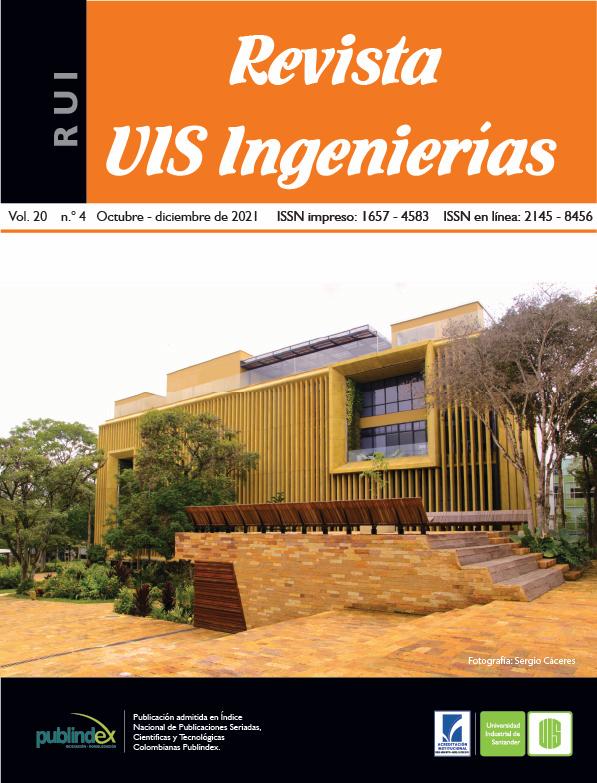A study of the structural, magnetic, and electrical properties of Ba1-xNaxCoO3 compounds (x = 0.25, 0.5, 0.75)
Published 2021-08-02
Keywords
- X-ray diffraction,
- paramagnetic,
- order magnetic,
- metal-insulator transition,
- resistivity
How to Cite
Abstract
Cobaltite-like materials having metal-insulator transitions are relevant in the consumer electronics market. In this work, we present the structural, magnetic, and electrical properties of Ba1-xNaxCoO3 (with x = 0.25, 0.5, 0.75) cobaltite. All samples were synthesized using a solid-state reaction process. Their crystal structure was determined using X-ray diffraction (XRD) data by the Rietveld method, which showed that all the samples were crystallized in the orthorhombic space group C2221 (N.° 20). The microstructure of the sintered samples was characterized by scanning electron microscopy (SEM). The magnetic susceptibility measurements confirmed a paramagnetic behavior for x ≥ 0.5 in the temperature range that was used. Likewise, a broad peak around 33 K in the sample x = 0.25, and characteristic of antiferromagnetic behaviors were observed. On the other hand, resistivity contributed to determining the insulating behavior of samples where x = 0.5 and x = 0.75. In contrast, at low sodium content (x = 0.25), a metal-insulator transition was observed with transition temperature near 105 K.
Downloads
References
[2] G. Thornton, F. C. Morrison, S. Partington, B. C. Tofield, D. E. Williams, “The rare earth cobaltates: localised or collective electron behaviour?,” Journal of Physics C: Solid State Physics, vol. 21, no. 15, pp. 2871, 1988, doi: 10.1088/0022-3719/21/15/019.
[3] K. Asai, A. Yoneda, O. Yokokura, J. M. Tranquada, G. Shirane, K. Kohn, “Two spin-state transitions in LaCoO3,” Journal of the Physical Society of Japan, vol. 67, no. 1, pp. 290-296, 1998, doi: 10.1143/JPSJ.67.290.
[4] Y. Ren, J. Q. Yan, J. S. Zhou, J. B. Goodenough, J. D. Jorgensen, S. Short, H. Kim, Th. Proffen, S. Chang, R. J. McQueeney, “Spin-state transitions in PrCoO3 studied with neutron powder diffraction,” Physical Review B, vol. 84, no. 21, pp. 214409, 2011, doi: 10.1103/PhysRevB.84.214409.
[5] H. Taguchi, M. Shimada, M. Koizumi, “Electrical properties in the system (La1-xCax) CoO3 (0.1≤ x ≤ 0.5),” Journal of Solid State Chemistry, vol. 44, no. 2, pp. 254-256, 1982, doi: 10.1016/0022-4596(82)90371-1.
[6] Y. Kobayashi, T. Mogi, K. Asai, “Spin-state transition in La1-xPrxCoO3,” Journal of the Physical Society of Japan, vol. 75, no. 10, pp. 104703-104703, 2006, doi: 10.1143/jpsj.75.104703.
[7] S. Tsubouchi, T. Kyomen, M. Itoh, P. Ganguly, M. Oguni, Y. Shimojo, Y. Morii, “Simultaneous metal-insulator and spin-state transitions in Pr0.5Ca0.5 CoO3,” Physical Review B, vol. 66, no. 5, pp. 052418, 2002, doi: 10.1103/PhysRevB.66.052418.
[8] K. Knižek, J. Hajtmánek, P. Novák, K. Jirák, “Charge transfer, valence, and the metal-insulator transition in Pr0.5Ca0.5CoO3,” Physical Review B, vol. 81, no. 15, pp. 155113, 2010, doi: 10.1103/PhysRevB.81.155113.
[9] V. Pardo, P. Blaha, M. Iglesias, K. Schwarz, D. Baldomir, J. Arias, “Magnetic structure and orbital ordering in BaCoO3 from first-principles calculations,” Physical Review B, vol. 70, no. 14, pp. 144422, 2004, doi: 10.1103/PhysRevB.70.144422.
[10] J. Sugiyama, H. Nozaki, J. H. Brewer, E. J. Ansaldo, T. Takami, H. Ikuta, “Appearance of a two-dimensional antiferromagnetic order in quasi-one-dimensional cobalt oxides,” Physical Review B, vol. 72, no. 6, pp. 064418, 2005, doi: 10.1103/PhysRevB.72.064418.
[11] A. C. Larson, R. B. Von Dreele, “General structure analysis system (GSAS),” Los Alamos National Laboratory, New Mexico, USA, Report LAUR 86-748, 2004.
[12] W. Luo, F. Wang, “Powder X-ray diffraction and Rietveld analysis of La1-xCaxCoO3 (0 ≤ x ≤ 0.5),” Powder diffraction, vol. 21, no. 4, pp. 304-306, 2006, doi: 10.1154/1.2358363.
[13] P. M. Botta, V. Pardo, C. de la Calle, D. Baldomir, J. A. Alonso, J. Rivas, “Ferromagnetic clusters in polycrystalline BaCoO3,” Journal of Magnetism and Magnetic Materials, vol. 316, no. 2, pp. 670-673, 2007, doi: 10.1016/j.jmmm.2007.03.058.
[14] J. Wu, C. Leighton, “Glassy ferromagnetism and magnetic phase separation in La1-xSrxCoO3,” Physical Review B, vol. 67, no. 17, pp. 174408, 2003, doi: 10.1103/PhysRevB.67.174408.
[15] E. Altin, E. Oz, S. Demirel, A. Bayri, “Magnetic and thermoelectric properties of B-substituted NaCoO2,” Applied Physics A, vol. 119, no. 3, pp. 1187-1196, 2015, doi: 10.1007/s00339-015-9089-0.
[16] A. Muñoz, J. A. Alonso, M. J. Martínez-Lope, E. Morán, R. Escamilla, “Synthesis and study of the crystallographic and magnetic structure of Se CoO3,” Physical Review B, vol. 73, no. 10, pp. 104442, 2006.
[17] R. J. Radwanski, Z. Ropka, “Magnetism and electronic structure of LaMnO3 and LaCoO3,” Physica B: Condensed Matter, vol. 281, pp. 507-509, 2000, doi: 10.1016/S0921-4526(99)00931-X.
[18] P. Mandal, P. Choudhury, S. K. Biswas, B. Ghosh, “Transport and magnetic properties of La1-xBaxCoO3,” Physical Review B, vol. 70, no. 10, pp. 104407, 2004. doi: 10.1103/PhysRevB.70.104407.
[19] K. Muta, Y. Kobayashi, K. Asai, “Magnetic, Electronic Transport, and Calorimetric Investigations of La1-xCaxCoO3 in Comparison with La1-xSrxCoO3,” Journal of the Physical Society of Japan, vol. 71, no. 11, pp. 2784-2791, 2002, doi: 10.1143/JPSJ.71.2784.
[20] D. Kaur, K. V. Rao, “Metal-insulator transition in epitaxial thin films of BaRuO3,” Journal of Physics D: Applied Physics, vol. 36, no. 2, pp. 156, 2002, doi: 10.1088/0022-3727/36/2/313.


